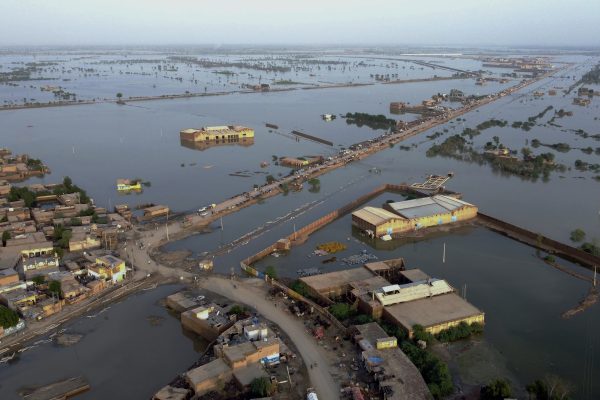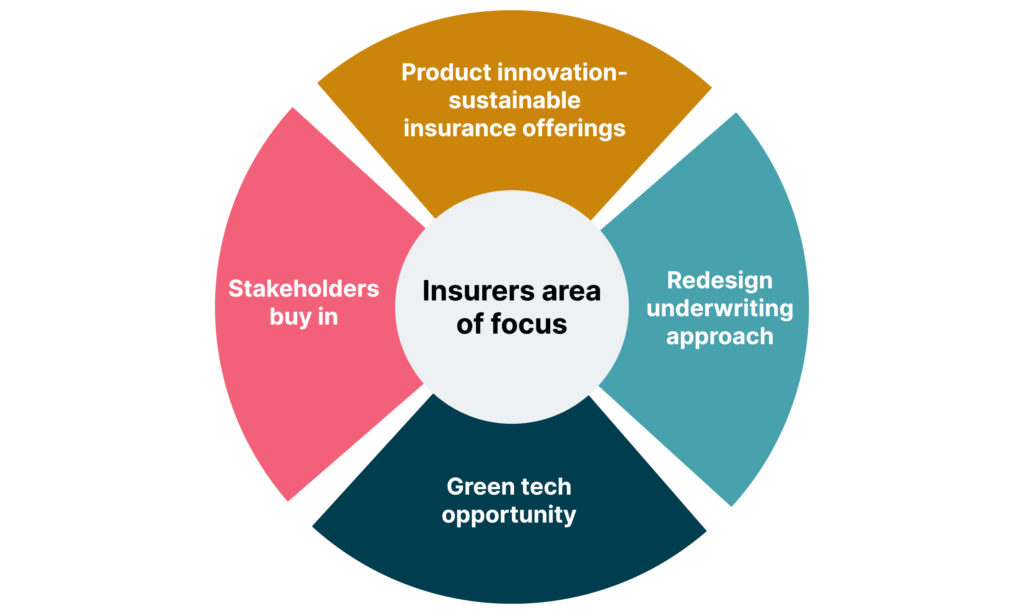Issues linked with climate change, like extreme heat, natural disasters, and biodiversity loss and the inability to respond to these challenges in time are extensively covered in reports released by organizations like the World Economic Forum
The effects of climate change are upon us, too; the heavy monsoons and subsequent flooding in Pakistan in 2022 is a strong reminder that we should stop playing with the Earth’s natural balance. As individuals, we need to protect ourselves and our assets from losses that are caused by climate change and its allied disasters.
Superficially taken, the effects of climate change do not seem unfavorable for property and business insurers. They can use their annual policy cycle and their advanced understanding of evolving risks to reprice and rearrange portfolios to avoid the long-term risks of climate events while protecting their clients from the impacts of climate-related events.

Insurance Industry and Economic Security
The insurance industry can offer its customers economic security by offering reliable protection. Insurers must, therefore, make climate risk a part of their management decisions. They should specifically use their understanding of risk and climate science to mitigate the systemic effects of physical climate risk for themselves and their customers.
Accomplishing these tasks involves five actions.
Stress-Test Portfolios Against Projected Climate Hazards
the concentration of risk can increase as climate-related losses spread over different types of coverage, flood, crop and property damage, and business interruption. The risk of multiple claims raised in connection to a single event is known as Aggregation risk.
This can extend past geographic bounds as climate change raises the risk of systemic disruption. For instance, an increase in average global temperatures increases the probability of floods and wildfires in a specific region regardless of specific location.
To evaluate risk exposure to climate change, insurers can consider implementing climate-specific stress testing beyond traditional catastrophe models to understand the impact of climate-related risk on their portfolios.
Insurers can accomplish this task by using advanced analytics techniques to project how various acute and chronic hazards are likely to affect them over time. Insurers should combine detailed climate data, down to the risk of a flood or fire for a single address, with an analysis of the macroeconomic implications of climate change to inform pricing and portfolio adjustments.
Rebalance Portfolios to Improve Resilience
Post-stress testing, insurers can improve their portfolio quality by considering low-probability catastrophic events, diversifying their portfolio, and strategizing to evolve exposure over time. Risk models that assume nonstationary risk and discount obsolete historical data will be more successful.
Help Clients Mitigate Climate Risk
Once insurers have their own portfolios and strategies in order, they can help their customers mitigate their risks. To do so, insurers need to scale their current incentives for approved options to include supportive measures with clients. The core principle will be to support clients that are trying to mitigate their risks and reduce claims that arise due to climate change-related damages.
Create Innovative Products to Address Climate-Related Risk
Insurers have an opportunity to offer innovative solutions to cover both new and common hazards, acute (such as floods) and chronic (such as reduced crop yields). Solutions can be as simple as parametric pricing which insures policy holders against events of a set magnitude instead of insuring the value of losses. Whatever the details of the solutions, long-standing actuarial approaches to risk modeling will need to evolve as climate risk changes.
Revise Investment Strategies
Insurers also need to reevaluate their investment strategies as global economies move toward long-term decarbonization, which will cause asset repricing and portfolio volatility, especially for carbon-intensive investments. Insurers also need tp systematically evaluate the combined exposure of their investment and underwriting portfolios to physical climate risk, especially where both assets and liabilities could be affected.

What Consumers Should Do:
As consumers, you can take several steps to protect yourself against the impact of climate change on insurance:
Stay Informed:
Keep yourself updated on climate change trends and how they can affect Pakistan. Understanding the potential risks can help you make informed decisions when purchasing insurance policies.
Review Your Coverage:
Regularly review your insurance policies to ensure they provide adequate coverage for climate-related risks. Consider additional coverage options such as flood insurance or enhanced property protection to mitigate potential losses.
Invest in Risk Mitigation:
Take proactive measures to mitigate the risks of climate-related damage to your assets. This may include refitting your home with features like renewable energy, maintaining a disaster preparedness plan, or investing in renewable energy solutions.
Advocate for Change:
Support policies and initiatives that promote climate resilience and sustainability at the local, national, and global levels. By advocating for positive change, you can help create a more resilient future for yourself and future generations.
Conclusion:
Climate change is reshaping the risk landscape for insurers and consumers, presenting new challenges and opportunities for adaptation. By understanding the impact of climate change on insurance and taking proactive measures to mitigate risks, consumers can better protect themselves and their properties in an increasingly uncertain environment. Together, we can work towards building a more resilient and sustainable future for all.

Sadia Zaheer holds a Masters in Business Administration from IBA, Karachi. After working in several financial institutions in Client Management, Corporate Lending, Islamic Banking and Product Management she jumped careers to pursue a career in writing.
She is a Finance, Business and HR Development writer with four years of experience. She reads a lot and takes care of her multiple cats to remain calm.



